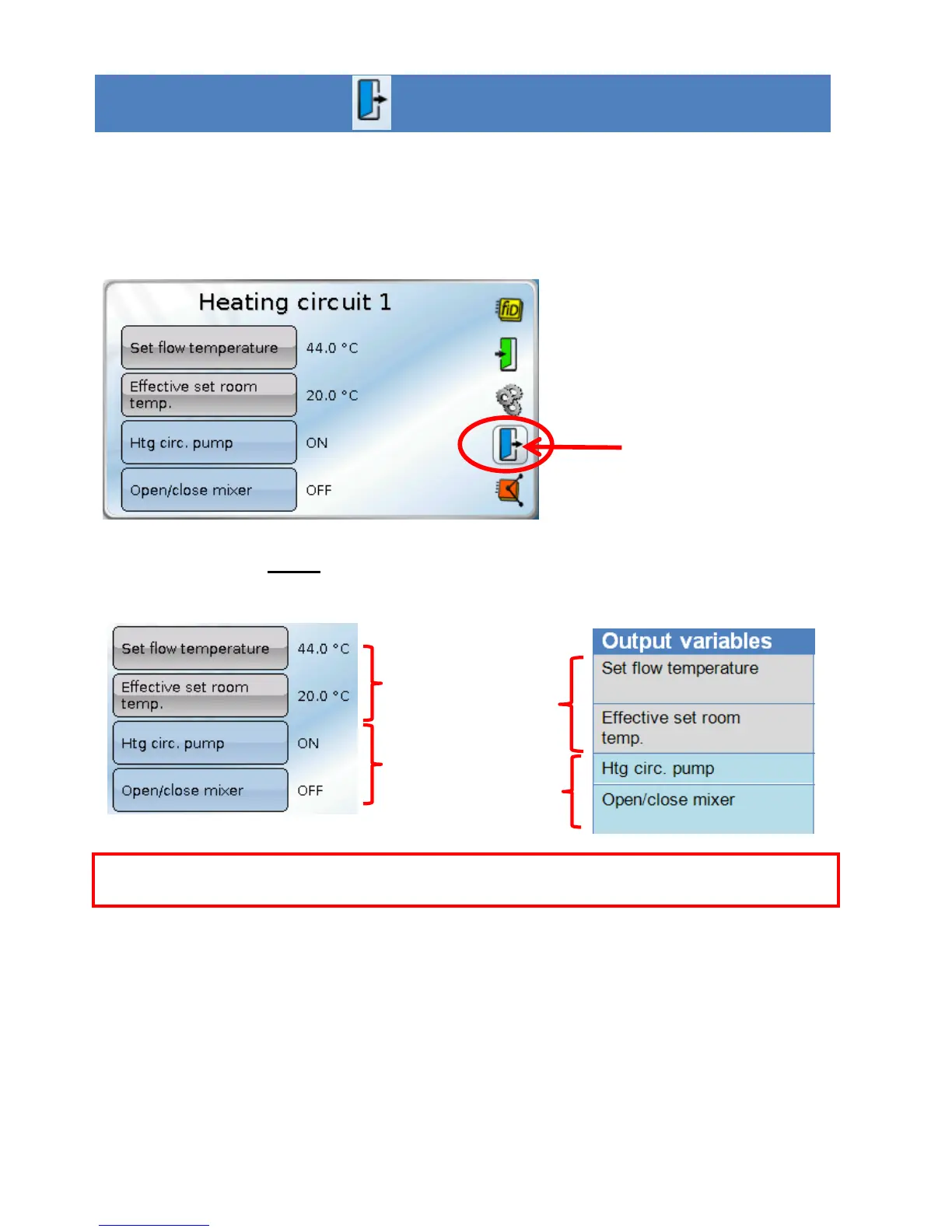Output variables represent the results of the function module. They can be used to switch a hardware
output directly, or can serve as the input variables for another module, or can be linked to CAN or DL
bus outputs. A single output variable can also be linked multiple times to outputs, function input
variables and/or CAN or DL bus outputs.
The number of output variables varies greatly depending on the function.
Example: In the Comparison function there are just 3 output variables; in the Heating circuit
function there are 23.
Some output variables cannot be linked to outputs; they are identified by a different colour.
Example: Heating circuit
Controller Depiction in the manual
Important: For every output variable, it is important to note the type of variable value when linking:
Analogue (numeric value) or Digital (OFF/ON).

